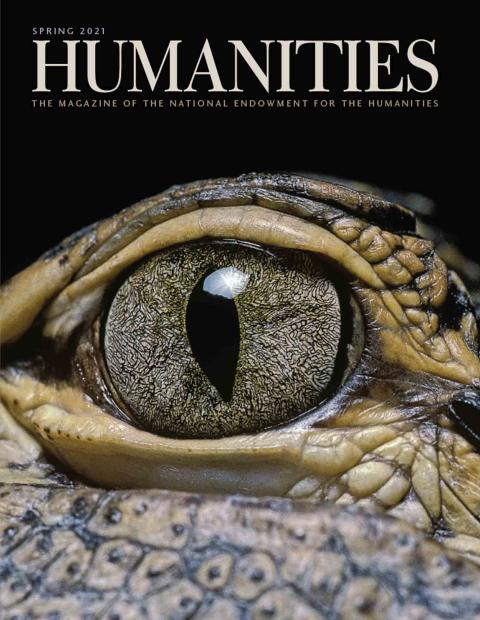Rising from the corner of Lafayette and O’Keefe streets in New Orleans, Turners’ Hall is a grand, palazzo-style edifice built more than 150 years ago for an association benefiting the German community.
It has seen stints as a machine shop, publishing house, and furniture store. It eventually returned to public service when the Louisiana Endowment for the Humanities (LEH) bought it in 2000. Now, instead of serving just one of Louisiana’s communities, the building serves them all.
One of Miranda Restovic’s first meetings as executive director of the LEH covered the next evolution in Turners’ Hall. The Helis Foundation John Scott Center, slated to open in fall 2021 and occupying the ground floor of the hall, will showcase dozens of pieces by New Orleans artist John Scott that explore civil rights and the honoring of ancestors. The center will provide a jumping-off point for programming and discussions.
“I frame it as the public square,” says Restovic, “that safe space for the public to come together and be introduced to ideas, debate ideas, and question ideas.”
Restovic is well aware, however, that many of Louisiana’s 64 parishes place different degrees of importance on the same conversations. Subawards from the LEH allow the state’s complex web of cultural institutions—from the Coushatta Tribe of Louisiana to the Iberia African American Historical Society—to share their histories in their own words instead of relying on far-flung academics to do it for them. One such grant helped the Coushatta Tribe build an archive that preserves centuries of history and culture.
Before the COVID-19 pandemic, Restovic traveled across the state, asking people what stories and topics were important to them. It’s what excites her about the work, she says. That, and listening for differences in Louisianans’ speaking styles, Restovic developed an ear for languages when she moved from Croatia to the United States as a child and is attuned to different dialects and inflections throughout the state.
This cultural sensitivity has guided the LEH toward creating programs that address environmental concerns. The Coastal Impacts Project uses readings, documentary screenings, and traveling exhibitions to encourage statewide discussions around coastal land loss. The majority of this programming takes place in Plaquemines, Terrebonne, and Lafourche parishes, where the effects of erosion are most profound.
“I think the humanities can bring an incredible amount of empathy and influence to the planning for the future of those communities,” says Restovic. As the state government develops new initiatives to protect the coast, humanities-based programming empowers citizens to share their insights at project-planning town hall meetings, which can lead to more effective coastal restoration.
Projects like 64 Parishes magazine further equip citizens with context. The LEH began publishing the quarterly magazine about state history and culture in 1990 under the masthead Louisiana Cultural Vistas, then combined it with its digital encyclopedia KnowLA in fall 2018 to create the 64 Parishes brand. A recent issue focused on the state’s relationship with human migration. The issue featured stories about the forgotten history of Japanese internment during WWll at Camp Livingston, how New Orleans’s Latin American population helped rebuild the city after Hurricane Katrina, and the solemn observance of the date 300 years earlier when the first slave ship arrived in Louisiana.
“The humanities are ultimately about relationships and the human experience,” says Restovic. As a child, she loved being informed about the goings-on in her community. She went on to become a teacher in New Orleans and later assistant director for PRIME TIME, Inc., the family reading program created by the LEH in 1991 that has since been implemented in 40 states.
Through PRIME TIME’s curriculum, which uses open-ended questions to help bond families and children around books, students become self-directed. It’s another way the LEH is preparing generations of Louisianans for a life of learning and civic engagement.
Tell Us More, Miranda . . .
What do you look forward to as the seasons change in Louisiana? The citrus fruit from Plaquemines Parish. If you could get out of New Orleans for the weekend, where in Louisiana would you go? Plaquemines Parish. There’s something so beautiful about that vastness and solitary nature of some of those coastal communities.


